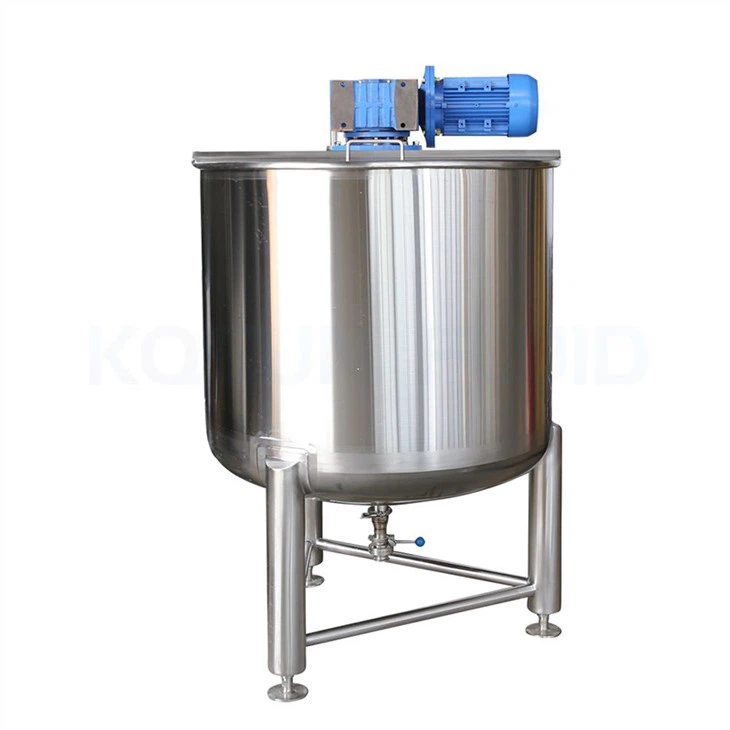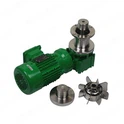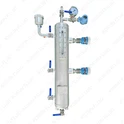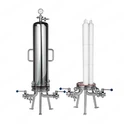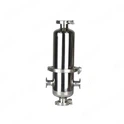The appearance of rust or pitting on the surface of stainless steel is typically linked to the degradation of its corrosion resistance. Although stainless steel forms a dense oxide film (passivation film) due to chromium, this protective layer can be compromised under specific conditions, exposing the metal matrix to corrosion. Below are detailed explanations of the causes and daily maintenance methods:
1. Common Causes of Rust or Pitting on Stainless Steel Surfaces
Corrosive Media in the Environment
Chloride Ion (Cl⁻) Erosion: Chloride ions in seawater, salt spray, industrial wastewater, or chlorine-containing detergents can destroy the passivation film, leading to pitting (localized small-hole corrosion). Equipment in coastal or chemical industries is particularly vulnerable.
Acidic or Alkaline Substances: Prolonged exposure to strong acids (e.g., sulfuric acid, hydrochloric acid) or strong alkalis (e.g., sodium hydroxide) corrodes the passivation film, causing uniform or localized pitting corrosion.
High-Temperature, High-Humidity Environments: Humidity accelerates electrochemical corrosion, especially when dirt or water films form on the surface, creating a micro-battery effect that promotes rust formation.
Surface Treatment Defects
Welding Defects: If argon shielding is inadequate during welding or post-weld pickling/passivation is skipped, carbides or chromium-depleted zones may remain in the weld area, serving as corrosion initiation sites.
Mechanical Damage: Scratches, impacts, or friction can damage the passivation film, exposing the underlying metal to rapid rusting in moist conditions.
Surface Roughness: Unpolished or rough surfaces trap dirt and moisture, exacerbating localized corrosion.
Improper Use and Maintenance
Incorrect Cleaning Agents: Using chlorine-based or strongly acidic/alkaline cleaners corrodes stainless steel surfaces.
Long-Term Accumulation of Water or Dirt: Residual moisture, food residues, or chemicals create a corrosive microenvironment on or inside the equipment.
Lack of Regular Maintenance: The passivation film may degrade over time. Without timely repair, corrosion risk increases significantly.
Material-Related Issues
Incorrect Material Selection: Low-grade stainless steel (e.g., 201, 202) has low nickel content and poor corrosion resistance, making it prone to rust in certain environments.
Counterfeit or Substandard Materials: Inferior stainless steel with non-compliant compositions fails to meet corrosion resistance standards.
2. Daily Maintenance Methods for Stainless Steel Mixing Tanks
Regular Cleaning and Drying
Cleaning Frequency: Clean at least once weekly, depending on usage conditions, to prevent dirt buildup.
Cleaning Method:
Wipe with a neutral detergent (e.g., soapy water) and a soft cloth. Avoid steel wool or abrasive brushes.
For stubborn stains, use diluted nitric acid (1–5%) or a specialized stainless steel cleaner, followed by immediate rinsing with clean water and drying.
Drying: After cleaning, wipe the surface dry with a cloth or use hot air to prevent water stains.
Avoiding Corrosive Substances
Isolate Corrosive Media: For tanks handling chlorine-containing or acid-base substances, use corrosion-resistant materials like 316L stainless steel and regularly inspect seals.
Prompt Leak Cleanup: If a leak occurs, halt operations immediately and thoroughly clean residues to prevent corrosion spread.
Surface Repair and Passivation
Minor Scratch Treatment: Sand along the grain with 600–1000-grit sandpaper, remove burrs, and apply stainless steel passivation paste to restore the film.
Post-Weld Passivation: After welding, perform pickling/passivation (e.g., using a nitric acid-hydrofluoric acid mixture) to remove oxide scales and chromium-depleted layers.
Periodic Passivation Maintenance: Conduct comprehensive passivation every 1–2 years to enhance corrosion resistance.
Environmental Control
Ventilation and Humidity Control: Maintain a well-ventilated environment with humidity below 60%.
Dust Prevention: Use dust covers to protect equipment surfaces from contamination.
Regular Inspection and Documentation
Visual Inspection: Check monthly for rust, pitting, or discoloration, focusing on welds, seams, and drainage areas.
Thickness Measurement: Use an ultrasonic thickness gauge annually to assess corrosion levels.
Maintenance Records: Keep detailed logs of cleaning, inspections, and repairs for traceability.
3. Maintenance Recommendations for Special Scenarios
Food Industry: Comply with FDA or GB 4806.9 hygiene standards. Perform microbial testing after cleaning to avoid cross-contamination.
Chemical Industry: Regularly monitor tank medium pH and chloride ion levels. Replace or clean the medium immediately if thresholds are exceeded.
Coastal Areas: Apply anti-rust coatings (e.g., epoxy resin) or use duplex stainless steel (e.g., 2205) to improve corrosion resistance.
Contact Us
- info@cnkosun.com
- +86-577-88309853
- No.428 Wenzhou Dadao, Puzhou Street, Longwan, Wenzhou City, 325011, China

